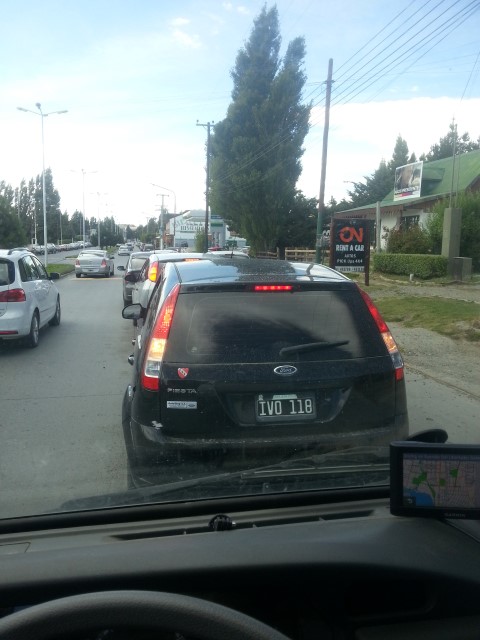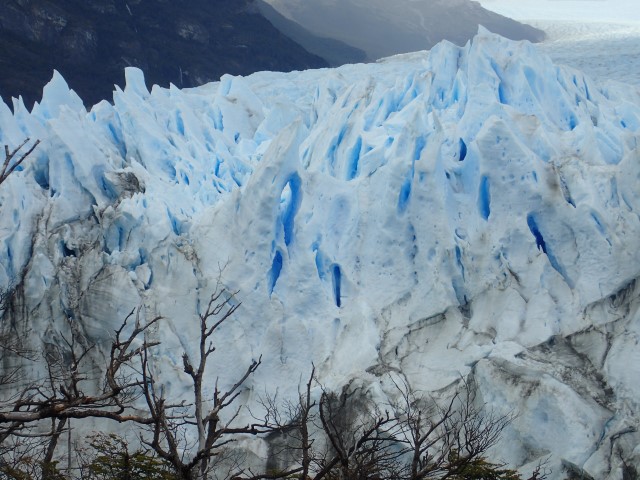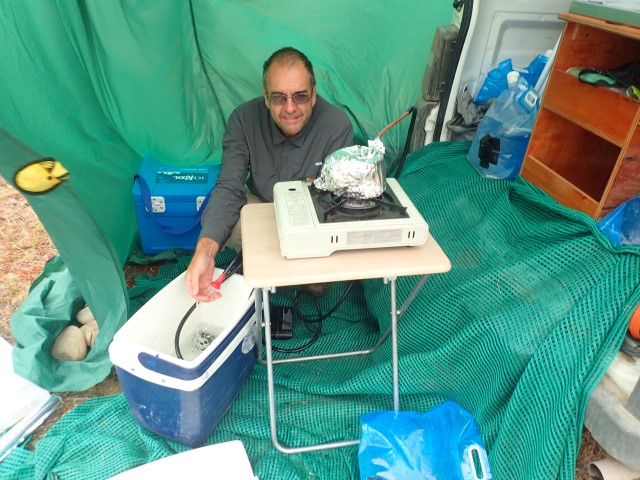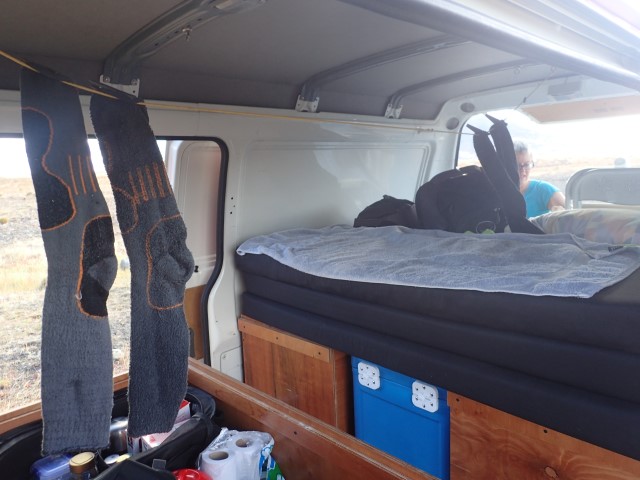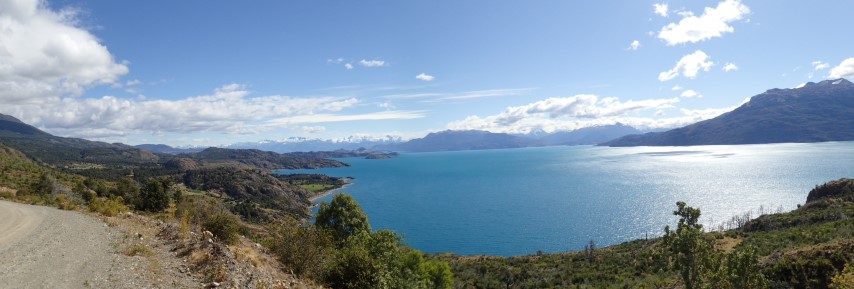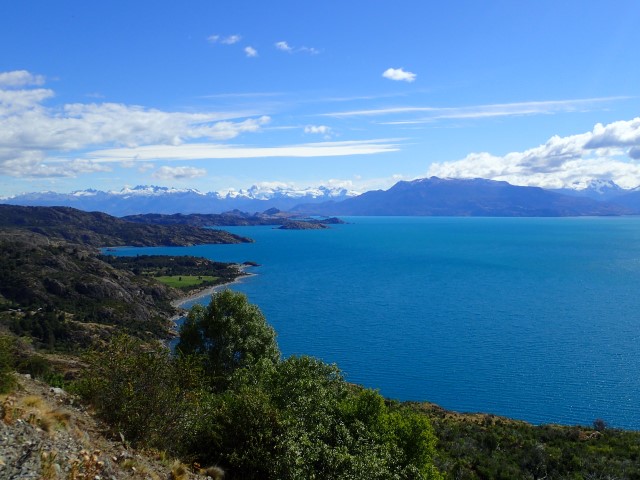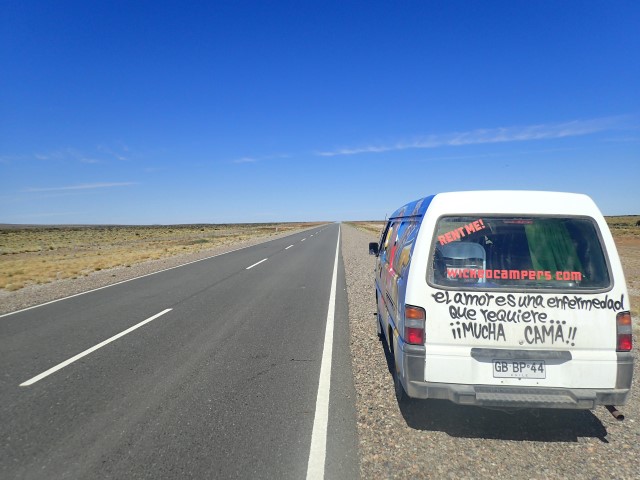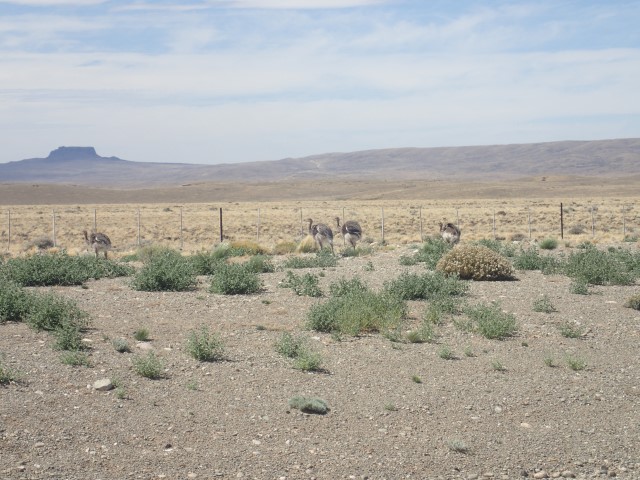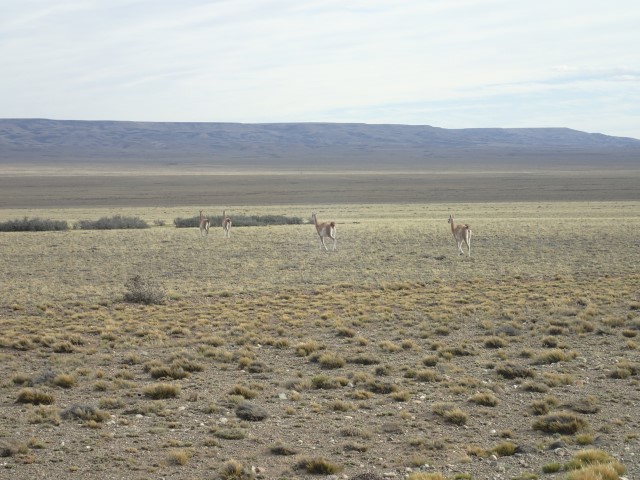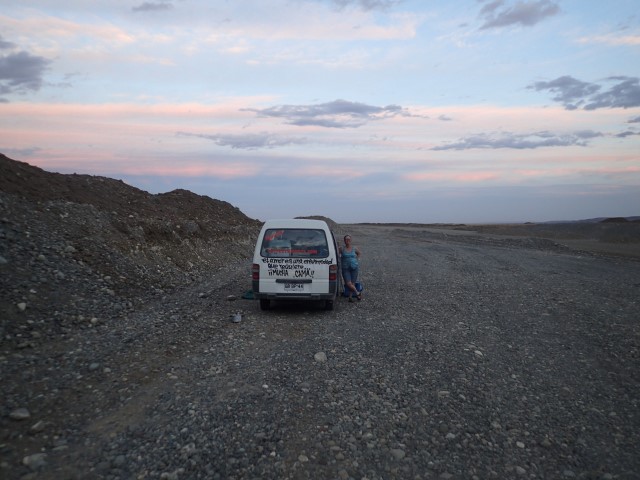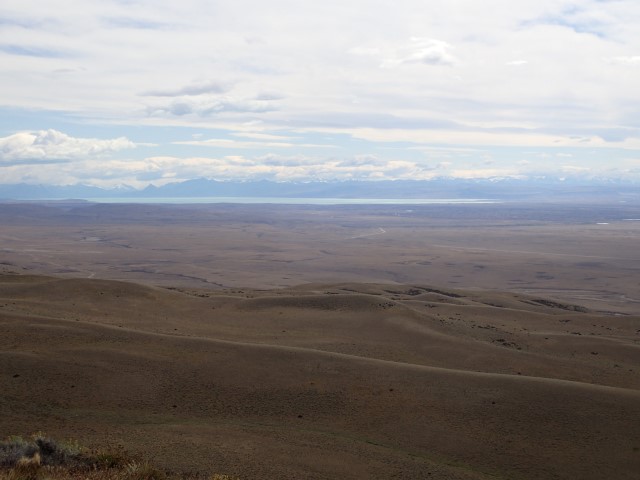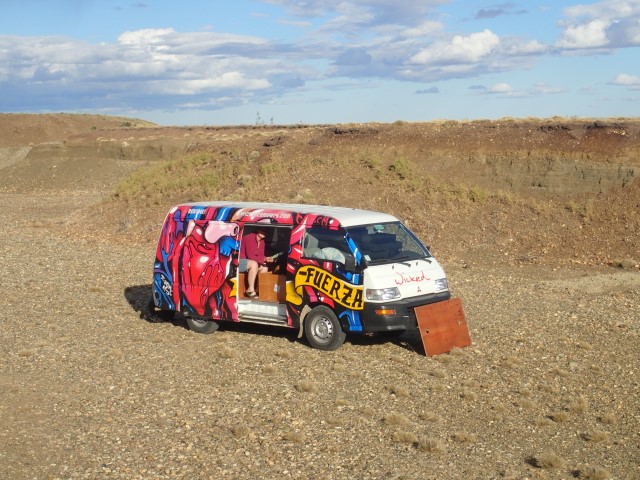So, continuing with the ‘what we did last week’ theme, we headed out of Torres del Paine National Park through the northern entrance, which is the better road and the route all the buses take. The entrance was full of buses and people, many of whom were trying to hitch-hike.
Lots of people hitchhike in Argentina and Chile, I’m sure we’ve seen more hitchhikers in the last 3 weeks than we have seen in our whole lives! They would all love to travel with us in our cool Wicked campervan, but then they would probably all love to travel in anything as long as it gets them where they want to go. Some of the roads we’ve travelled on don’t have much traffic at all, and it could take a long time to be lucky and get a lift. We passed a couple yesterday afternoon at around 7pm on a quiet road and I thought … I hope you guys have a Plan B, ‘cos you’re probably not going to get much further tonight.
Another border crossing back into Argentina, another system to try and navigate. We thought border crossings in Africa were all a bit different, but comparing them with the Chilean and Argentinian ones, they were easy! We were heading to El Calafate, which is in the southern part of Glacier National Park, and west of Routa 40. We had to detour there a couple of weeks ago when we needed petrol. The southern part Glacier National Park is further west of El Calafate and features some truly spectacular glaciers which are easily accessible by road or boat.
But first, there was the small matter of refuelling … which seems to be a constant theme of this trip. El Calafate has 2 service stations, one at either end of the main street. The first one had a huge queue going up the street, over the bridge and around the corner – we couldn’t see where it ended. The second servo charges 10c/litre more, which seems to be a bit of a big deal for price-sensitive travellers (we’ve paid heaps more in outback Australia, and even prices between suburban servos can vary by up to 30c/litre), so we headed there, but …. Oh No! No fuel. The attendant told me that the next tanker would arrive manana in the morning, but it’s that’s fairly loose term which can also mean later, sometime, never. We went to the 2 supermarkets in town to get a few things, sat for a while and had lunch and drove past the more expensive servo about an hour later to find a queue of cars and one petrol bowser working. So we joined the queue, waited a while, refuelled (cash only!) and headed 80kms west to the National Park to see the Perito Moreno Glacier.
Wow, what a sight! It’s about 5kms wide and 14+kms long, and it’s probably the most easily-accessible glacier in the world. Well, I know it’s taken us a couple of days to fly here and a few weeks of driving, but it is possible to just fly to El Calafate, hire a car or hop on a bus, then just walk a few hundred metres down some well-constructed steps and platforms and see it in all its glory, just a couple of hundred metres away. It is absolutely magnificent! We walked the long way around, about 1.5kms of boardwalks and steps, so we started at the shorter end furthest away and made our way to the closer, taller end. It’s a tidewater glacier, running into Largo Argentina, and we listened and watched for pieces breaking off into the water.
The National Park doesn’t allow camping, so we consulted ioverlander.com and found a lovely spot just behind a small hill off the road back to El Calafate. It was windy, but Greg rigged up the shower system and a tarp and we had hot showers, then a hot meal. Perfect!
Los Antiguos – Cochrane 18.2.16
I’m going to jump ahead now before I forget too much. I’ll re-order some of the posts later.
The night before last we stayed in Los Antiguos, just across the border in Argentina. The municipal campground had been described in our Footprint guide book as ‘outstanding’, which seems a bit over the top, but it did have hot showers and most of the toilets had toilet seats. We found a site with power away from the very crowded tent camping area, and woke up to tents crammed on either side of us. I think we have a different perception of ‘personal space’ to the locals.
And so to, hopefully, our last border crossing ….. back into Chile. I’ve lost count of how many crosings we’ve done, but we’ll get a photo of the van’s customs papers before we give them back with the van. Loads of stamps, signatures, dates. And even though we’ve entered Chile … well, a few times … we had to fill in a piece of paper we’d never seen before!
There’s a huge lake here – called Lago Buenes Aires on the Argentinian side, and Lago General Carrera on the Chilean side. Deep, blue, icy clear water. The road from the border to Routa 7 Carretera Austral The Southern Highway goes along the southern edge of the lake and the scenery is stunning. A postcard around every bend. We could see glaciers on the mountains to the west, fed by the Campo de Hielo San Valentine Saint Valentine Icefield.
We stayed in a backyard campground last night in Cochrane on Routa 7. About 25 people in 3 vehicles & 14 tents sharing 2 bathrooms, huge queue for them this morning. The owner really needs to put in a separate toilet. We’re just waiting for a backpacker to ask us for a lift … I think we’ll need to check the van for stowaways before we leave. We’re heading 200kms south to Villa O’Higgins, which is as far south as we can get on Highway 7. There’s an American guy from Washington State here and he just came from there yesterday and told Greg that the road is good. There are glaciers there fed by the Campo de Hielo Norte Northern Icefield that we’ve seen from the Argentinian side, so we’ll hopefully get to see them from the Chilean side.
